By Guillermo Martín Caviasca *
The struggle for world order that has been developing on the planet for some time now is unfolding in multiple fields: a central one is the economy, but also culture, political forms of organization of states, international institutions etc. are spheres of conflict. But in times of extreme contradictions manifested in the form of war, in which central actors of world geopolitics are prominently involved, events of tactical nature, such as battles, can have far-reaching strategic repercussions. This being so, the recent announcement of the withdrawal of the Russian armed forces from Kherson merits serious reflection on the course of military operations.
Immediate background
In the first instance, we must remember that war is “the continuation of politics” or rather, a way of doing politics. It is a part of a policy in the field, be it IR, geopolitics, class struggle, national or factional interests. In other words, war is a part, an expression, the most radical part of a policy. This is what Carl von Clausewitz’s sentence means. The policy is the one that fixes the objectives, the military is in its field what must help to materialize them. The military is not independent, far from it, but neither should politics demand unrealizable tasks from the military. The political defines the strategy and specifically the grand strategy (in the sense proposed by Lidell Hart) and defines the extent of the military effort.
It is also noteworthy that, in strategy, whether political or military, the plans drawn up by the contenders usually encounter a reality that interacts with them, forcing them to adapt permanently for the sake of the objective, as another Prussian, Von Moltke, pointed out. The alteration of these plans goes hand in hand with the enemy’s capacity and with the success of our own capacity to understand the scenario beforehand and then to adapt to the uncertainty opened up by the new situations.
Secondly, we must understand that the terrain of “war” or “struggle” (every war is a struggle, but not every struggle is war) for an objective is “multidimensional”. That is to say, that the plane of concrete military operations is only a part of the fronts that define war. An excellent army, with very good officers, with first class weapons, can be defeated by another army that has behind it a nation with an overwhelming industrial and human capacity and a correct analysis of the situation. This is an abstract and simple example.
But the planes of the struggle or war are deployed in the IR with the frameworks of alliance, isolation or not; in the field of propaganda and awareness; in the field of economy and finance, both local and foreign and global; in the field of intelligence, in the field of combat, as well as in the field of destabilization, generation of dissidence, and in the multiple military fields today extended to space and cyberspace etc.
It is to emphasize that when the conventional war in strict sense unfolds the result of each one of the battles between great military units, the loss or gain of lands, the thousands of casualties, prisoners, captured or destroyed material, takes on a relevance that conditions the rest of the plans. In short, if an army captures the capital and eliminates the combative capacity of the enemy forces, it has won the war, at least that chapter, and moves on to another stage. Although it is also true that the fight, and even a war, can be won outside the battlefield, in the plane of great politics. However, this is not so if the war is lost, or gives an image of extreme weakness in the field of arms.
The stages of war
Having said this, let’s move on to an operational account of the war that began at the end of February, 9 months ago now. By way of clarification, it is 9 months ago that Russia decided to invade Ukraine. But this is only an escalation of the war that had been developing since at least 2014, with the “Euromaidan”, when the pro-Western sectors carried out a “color revolution” (bloody) and overthrew the legal government, producing a radical alteration of the geopolitical balance against Russia. It is from that moment that we can see the development of a “hybrid war” with already very strong military aspects, and a civil war with foreign intervention.
Russia’s approach towards Europe was explicit: to create a European sphere of agreements without NATO. This would allow Russia to develop economic links with the West and the East (an autonomous policy). And it should also allow continental Europe to do the same. But this was not the case, it required a decision by Germany (and France in common) to put itself at the head of a bloc (also militarily) separate from the USA and England. And that was too much for the German ruling elite still tied to the consequences of the Second World War and with sectors of strong interests tied to the Atlantist “extreme West”. Thus, the decision to add Ukraine to the Western defense system and to absorb it economically implied a displacement of Russia from its own immediate sphere. And it should be remembered that Ukraine is a country with a Russian presence in terms of identity in important regions. In a similar sense as towards Europe, Russia was questioning Latin America (also China with much more economic weight), trying to create ties at different levels, bypassing the siege with which the geopolitics of the US and England (or to a lesser extent other Westerners) keep this region in their unquestionable sphere.
The war
The Russian offensive developed throughout the month of March was deployed with two objectives and two hypotheses. The objectives were: 1) to bring about a transition from a pro-Western government (and form of state, identity etc.) to a neutral one that would guarantee a balance and maintain Russian influence: 2) the recognition of Crimea as a Russian territory and some differentiated status for the ethnic Russian majority provinces. In this intervention, a very large part of the population, and even the officialdom, would support the invasion as a liberation.
The assumptions were: 1) that the Ukrainian government would collapse just by kicking in the door; that (it seems that this belief was not just propaganda), a minority of fanatical Nazi lumpen fanatics had seized power against the majority will of the population: 2) that the Ukrainian Armed Forces were not solid; they had no morale, they were not unified, they would not resist; moreover, there would be large desertions and a change of sides. Almost like a continuation of 2014.
With these ideas the Russian plan for the campaign was correct. A force of 200,000 men (less in combat since every army must have a substantial part of its men for logistics services, rearguard, protection of communication routes, etc.). They seemed to be enough, in a scenario like this one to occupy the territory and reduce isolated groups of Nazi fanatics. A good and quick blow on Kiev, the assumption of a new Ukrainian government would rise with a new administration, at most in a few days. Thus the main battle theater where the largest and best forces were concentrated in the advance on Kiev (three combined arms armies, two divisions of airborne forces, Spetsnaz and Wagner group units).
The need for speed implied that the advance should be developed with an airborne operation that should occupy the Gostomel airport, to receive rapid reinforcements and advance on a city where the defense would be uncoordinated with a fleeing government.
But this was not the case. The Ukrainians held out. Gostomel was occupied with heavy fighting and several helicopters and aircraft were shot down. The US and British intelligence had been warning (rightly, which deserves analysis) that the invasion would take place that day, and (we believe) knew with some precision that it would develop that way. The Ukrainians had a good brigade of the territorial guard in the city on alert (among a very dissimilar set of forces) and anti-aircraft positions in the approach corridor of the airborne forces. The Russians engaged in a weeks long fight sending more and more forces that failed to break the Ukrainian resistance, which against predictions grew rapidly in numbers, well advised and directed by western experts and crushed the overextended and poorly protected logistics. The government did not collapse. On the contrary, in those immediate days, with the freedom of war, it eliminated (literally) all opposition and possible Russian sympathizers. The Russians did not wish, nor could they with the forces involved occupy Kiev, it was not their plan a long urban battle, in any case. So after heavy casualties, they abandoned the north of the country, and the war began a new phase.
Certainly the Russian offensive with multiple lines of advance in charge of the famous BTGs was a blitzkieg of a new type, in charge of the new Russian tactical units. A BTG is the basic unit of the Russian army for ground warfare. Each BTG is a combined arms structure, including (in theory) about 800 soldiers plus about 50 armored vehicles (artillery, tanks, transports, electronic devices, etc.). For the Ukrainian campaign, the army concentrated about 125 of its 168 BTGs, three-quarters of the total combat force. They are an effective force, but scattered over the large Ukrainian territory, fighting against units prepared in tactics in accordance with the enemy, with numerous anti-armor weapons, they suffered many casualties. Their objective was (as we pointed out) to fight residual resistance of a collapsed state. Not to face dispersed by a front of thousands of km, a well organized army, with a great logistics (NATO) and with a very precise intelligence. It should be noted that the Ukrainian war also involves a “military revolution”, a plethora of new technologies appear in action and “new weapons will require new tactics”, as well as opening a space for medium-sized nations to have military resources to support their will for autonomy.
We also pointed out that the Russians “failed” but were not “defeated”. They failed because of a misinterpretation of reality. It was not a “special operation” to “cleanse a territory of armed “neo-Nazis”, but a war of one country against another. Whether we like the political regime or not. Whether we have sympathy or not. The civil war had become a national war, and that is a Western success (there is still civil war but it is subsumed).
Second stage of the war
The second phase of the war began with the announced Russian offensive that seemed to coincide with “victory day”. The Russians had diminished their front of operations from an arc of about 3000 km from west of Kiev to Nicolaiev. To a little over 1000, from Kherson to the vicinity of Kharkov. With the effort put into completing the occupation of Donbas, a territory (in fact, a wedge in the front) relatively small, about 300 km of front in an arc. There were great expectations, the symbolic, the Russian power (now yes) would overwhelm the Ukrainians. Since May the Russian offensive was concentrated on a reduced scenario. They did not choose a larger operation that would collapse the front, such as trying to occupy Dnipro, which would collapse the Ukrainian army on the Donbas front. Nor to try to occupy Kharkiv, a city of enormous weight. Both operations were out of reach of the deployed forces it seems. But with the same units assigned to the “Special Operation” redeployed in a smaller theater, to defeat the Ukrainian forces in Donbas and consolidate the occupation of all the key provinces.
The truth is that from May to September the Russian pressure was intense. And through a small breakthrough in Popansa (a small town), which produced a threat of encirclement of the Ukrainian salient, they managed to occupy two cities of some importance, Severodonetzk and Lisichinask. But this was the only clear victory; the Ukrainians managed to evacuate the area and withdrew a few kilometers to new positions where they have been resisting attacks and counterattacks for months. The army of the Russian Federation could not, did not want to or did not know how to take advantage of the moment and advance towards more extensive objectives (even the cities of Kromatovsk and Slaviansk with which it would complete the two provinces of Donbas). Taking into account that this is the only clear Russian victory that resulted in the advance of a few tens of kilometers, we believe we can clearly point out that the offensive launched in the second phase of the war failed. And that resulted in the dismissal of the commander.
But this second phase had a more serious outcome. Faced with Russian exhaustion (naturally every military campaign needs operational pauses) the Ukrainians announced the launching of a “great counteroffensive”. Nobody believed in the Ukrainian capability that this counteroffensive deserved the title of “great”. The truth, (to shorten the description of these military operational aspects) is that the Ukrainian announcement was the intention to launch on Kherson. The Russians dug in and everything looked as it was foreseeable, that the Ukrainians would crash into the best Russian troops in defensive positions. However, soon after, in a surprise attack (perhaps thanks to Western intelligence that maintains a very detailed situational awareness), the Kharkov front was attacked on the opposite side of the front and the Russians withdrew rapidly, abandoning the whole province in a retreat that territorially implied more than all the spaces occupied by Russia since May. It is true that it was a province that they did not (at least not after losing the territories) intend to annex. In view of this, recognizing in fact the serious loss, the Russians changed the command of the troops and announced a significant mobilization of their reserves. The Ukrainians continued the offensive and managed to occupy in combat, this time, key positions in Donbas such as Liman and Izium, very important to be able to advance on the rest of the provinces still in Ukrainian hands, when a new offensive is developed. And if this were not enough, after two months when most analysts considered the offensive exhausted, the Russians abandoned, first in the north of Kherson and then announced that they will do the same with the rest of the province.
Since September, the Ukrainians have not stopped winning victories, although most of them are due to Russian retreats, which assume the impossibility of resisting successfully, this is clearly a victory of the Western strategy on the battlefield, since a victory does not necessarily have to do with the fact that there are many dead, but that the objective is achieved. And for two months (until today) Ukraine has the strategic initiative. Although (it is worth remembering) the Russian forces are far from being defeated, and Russia is much less affected by the war.
The new stage and the abandonment of Kherson
Everything seems to herald a new stage of the war with a new commander Sergei Surovikin replacing Alexander Dnornikov. Dnornikov had been appointed in April to take charge of the military command for the Donbas offensive, after Ukraine consolidated its resistance and made the Russian plans for a transition of government fail with the lightning offensive in February. Now Surovikin will have to find a military solution to the current impasse. The first steps are already visible with the beginning of a systematic strategy of devastation of Ukraine which may lead the country to collapse and/or the West may have to allocate more resources to sustain it in combat. In the meantime the Russian army is recovering from the undoubtedly numerous losses, training new recruits and replenishing equipment (it is useless to discuss in times of war the human and material casualties, as they are subject to “propaganda” and the official numbers are usually incredible, we can only affirm that they are not the ones presented by both sides, although Ukraine hides very effectively its own and only Russian casualties are discussed).
On the other hand, in the non-military planes of the war Russia operates in other scenarios successfully disputing its presence in Africa, maintaining and expanding a bloc in the BRICS, participating in forums autonomous from the West and making agreements that demonstrate that it is not isolated; although it is also worth noting the possibility of attempts to destabilize the periphery, as we have seen recently. In the same sense, Russia expects the effects of the war to be felt in Europe, especially in the countries that were economic partners such as Germany, and in the whole of Europe because of the energy issue. Undoubtedly this heralds social problems for the people of Europe and economic problems for industry in general. This will have political and IR repercussions that should indicate a greater tendency for the most affected powers (France and Germany) to put pressure on the Anglo-Saxon axis, NATO and more globalist sectors, for peace agreements and concessions. Russia is betting on its greater capacity to absorb the social and economic consequences of the war and on the reconversion towards the East. In spite of the fact that all analysts (including the Russian Central Bank) announce a contraction of its economy, the truth is that the Russian population will suffer less than the European one for the time being and (obviously) nothing compared to the Ukrainian one. In other words, in the grand strategy space, Russia has been fighting a battle that seems to neutralize Western attacks and to provide alternatives. What is happening is that it is fighting a battle that goes in the “sense of history”, with its linkage to a multipolar world and with new emerging great and middle powers, and the more horizontal linkage with the former third world; and that, in a war of attrition, time (at the level of the grand strategy rather than of the concrete tactical combat) is expected to play in its favor. We shall see.
However, in this tactical and operational scenario of the war, when it was analyzed that the Ukrainian offensive had exhausted its momentum or that the Ukrainians were considering the possibility of an offensive on Melitopol or even trying to reach Mariupol, the Russian commander announces his withdrawal from Kherson. It is evident that holding Kherson implied a great effort for them; that was visible because of its location. Militarily it is logical, numerous forces and at risk, necessary to solidify the most threatened front between the Donbas and the Dnieper. But it will be very difficult to recover militarily that territory behind a huge river again. And the withdrawal must certainly affect the morale and confidence of the pro-Russian population in the area. Let us remember that the recent plebiscites were held to demonstrate the determination in this war, in those territories the local population was mobilized, an administration was built. Being at war these territories will again pass to an enemy government. In a war the identity, way of life etc. of the population is at stake; the construction of a Russian or Western Ukrainian nation. It will be a hard blow and it also generates doubts at a general level that the policy carried out this last month was in accordance with the military possibilities. This in turn will have an impact on the confidence of the other populations, from which it is hoped to gain accession, for which it is necessary to show strength.
According to explicit statements of Surovikin, the Russians are thinking to take care of their forces, even with important retreats (very difficult decisions he pointed out already some time ago, it is noticed that he had in mind this retreat). They are already doing it in Kharkov, Izium, Liman and now it is this important city, hoping to gather forces for a new offensive with another axis later. Also to wear down and break Ukraine with a systematic strategic bombardment which seems to be succeeding in roughing up the country, as the Ukrainian authorities themselves announce, with some desperation, requesting more Western aid to sustain the war. Perhaps it is just a signal for a negotiation that finally does not happen (or does happen), as some international actors have been putting on the table (including in the USA). There are pressures to pause the war. Perhaps the general in charge is just putting order in the midst of the previous failures and the lack of military political coordination. In military tactical terms it is undoubtedly a relief for the pressure on the Russians. The front is shortened. But war is much more than tactics, although there is no possibility without it. The war is not won with retreats, which follow retreats and new retreats. Whoever, for the sake of fanaticism or of being in a trench, does not see the seriousness of this announced withdrawal, does not think.
And how does Latin America play in this scenario?
As we pointed out above, all conflicts are played out on multiple planes. So is war. For example, in the Malvinas war, if the Argentine forces had foreseen a resistance of one more month on land and in the air, without the need for any key victory, just to stay in combat, they would have caused England and its expeditionary force logistical problems, and therefore operational problems of enormous difficulty, greater than a specific battle. In spite of its (in the general balance) notorious superiority or Argentina’s impossibility to win in a land battle under the conditions proposed. The war itself tells us that the international scenario, the alliances and the game in other planes beyond the battle over determined the result. Of course, if one loses in an unappeasable way in the military field, the possible successes in other planes are lost. And, even worse, if beyond the military level, the other domains where the conflict unfolds are approached in the wrong way – a case that Argentina discovered throughout the war, given the very wrong or contradictory position of the military coup. The opposite is the case in today’s Russia. Russia today is in a war and its leadership is intelligently positioned in the other domains.
This being so, how does Latin America play in the geopolitical level, on which war is inserted and determines it? A world order is opening up where multipolarity will be the characteristic of the times. Latin America should be well prepared to face this new stage, since the so-called progressive stage at the beginning of the millennium developed (with notorious differences per country) a certain tendency of strategic autonomy in the field of IR. This trend was manifested in the creation of autonomous regional organizations and an international presence with its own profile. It should not be exaggerated, since structurally, in the economic and financial sphere, the ruptures were not such, but rather there were tensions within the inherited model (always as a general trend).
However, in spite of this background, which could function as a floor, our continent is much less active in an autonomous way. The progressive wave was swept away in several key countries (such as Argentina and Brazil, for example) and gave way to a cycle of subordination whose effect was to generate a new floor disciplining the interests of the local ruling classes (or with interests in the region) globalized and geopolitically aligned with the hardest pole of the West. That floor was inherited as a “natural framework” by progressivism within which to negotiate places.
This undoubtedly prevents Latin American countries from moving towards a path of strategic autonomy and from building a regional space with its own personality that harbors middle powers. In the new multipolar world, the scope of which is defined by the conflicts of the present, among them the war in Ukraine, as the most outstanding of the moment, Latin America should have its own, more active national policies.
We should then ask ourselves what the new “progressive wave” means. We believe that the Latin American present is closer to a position of moderation within the given local and international scenario, without intentions of change or accumulation in another direction. This undoubtedly goes against the possibilities opened up by the international transformation we are living, where the possibilities of autonomous strategic projects have important space, as demonstrated by countries such as Iran, Türkiye, India, and even countries historically more aligned with the West such as Pakistan, Saudi Arabia, South Korea, etc.
Not only an opportunistic use of the rising price of raw materials (to obtain resources for the nation, not to be appropriated by globalized capital), but also to advance geopolitical initiatives both in the economic sphere and in the articulation of autonomous international organizations. A new and more active presence in the BRICS, an independent military policy, the establishment of control over certain basic resources and financial decoupling and in more spheres, taking advantage of the emergence of numerous autonomous actors. The current disorder or this transition to a new order opens up these possibilities. Although it seems that our political elites do not believe it is possible.
Beyond the actions and possibilities of our region, its opportunities, lost or not (we shall see), we must take into account the other pole of the contradiction. In this case, the policy of the American hegemon: the USA. The evolution of the “Monroe Doctrine” up to the present day implies knowing the concrete deployments of this power in the different historical stages. And at this moment it is the concrete way in which the US seeks to align the continent in the latest definitions of NATO and the G7 (whose axis was the confrontation with Russia and China and the defense of the “democratic way of life”). Resolutions that in Argentina we have seen in advance with the presence of Jake Sullivan, responsible for national security in the Biden administration, the commander of the Southern Command, General Laura Jane Richardson and the intense activity of Ambassador Stanley. These resolutions are manifested at the military level under the doctrinal category of “Integrated Deterrence”.
What does it mean? The US Secretary of Defense, Lloyd J. Austin, pointed out since he took office in January 2021 that “integrated… we mean, integrated in all domains, conventional, nuclear, cyber, space, information”. He added that “integrated in the theaters of competition and potential conflict (…) integrated in the whole spectrum of conflict, from high intensity warfare to the gray zone”.
Our region saw the advance of this concept and its consequences at the XV Conference of Defense Ministers of the continent in July of this year. There, the US presented this new doctrine in order to make it common. And it clearly stated that the threats against which this “multi-domain” integration should be directed were against China and Russia, along the same lines as those proposed by NATO in Madrid. Let us remember that both “integrated” and “multidomain” refer to the military planes in the broad sense, as well as to all kinds of “hybrid” fronts, be they cultural, influences in the field of the media, centers of studies, inter-state relations, military or civilian, technological, etc. And above all, the worrying Chinese penetration in the economic, investment, technology, etc. fields.
It should be noted that several Latin American countries, including Argentina, Brazil and Mexico, expressed reservations on the subject, especially with regard to the mention of the war in Ukraine. And Argentina itself did not send its Minister of Defense but its Secretary of International Affairs Minister Santiago Cafiero, which in itself is lowering the price.
Latin America finds itself in a contradictory moment of setbacks and opportunities. The new, softer and more resigned progressivism, self-assumed as weak and conciliatory, seems to be in a bad condition to be the head of a Latin America that goes out to find its place in the pluripolar world that is opening before our eyes as a luminous historical opportunity. However, the meaning of the transformations we are experiencing may change in its forms, but not the transformation itself. The Ukrainian war is the sign of the pains of the birth of the new, of the resistance of the old and of the struggle for the balance of future power of the different actors. Those who manage to think about their nation and region with a view to building a project of strategic autonomy will be the ones who will make history and will be remembered by their peoples.
* Faculty member, history department, University of Buenos Aires, Argentina







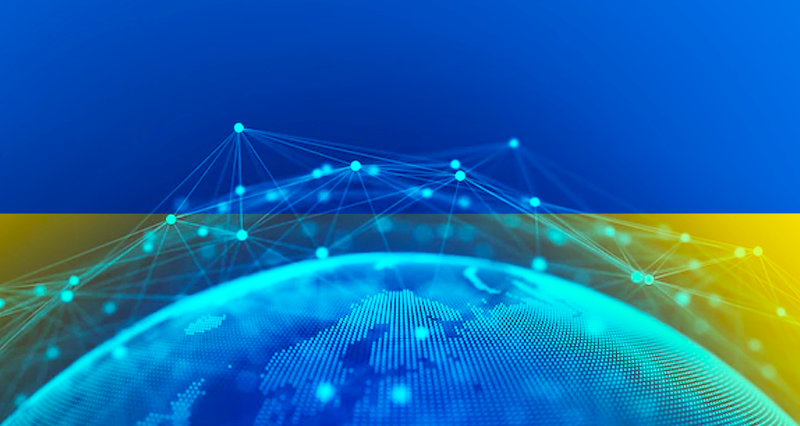
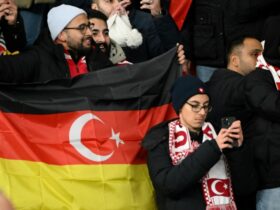
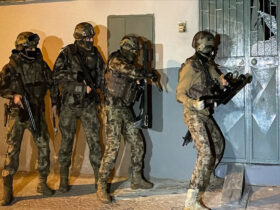

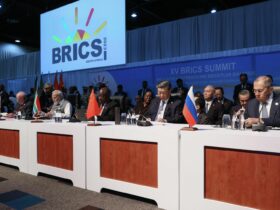
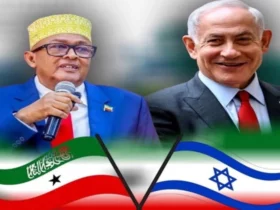
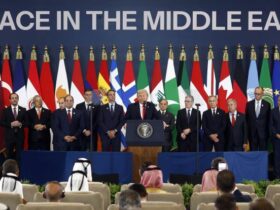



Leave a Reply